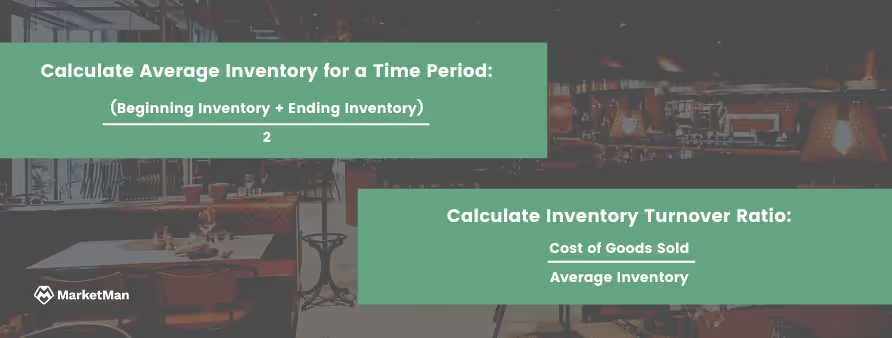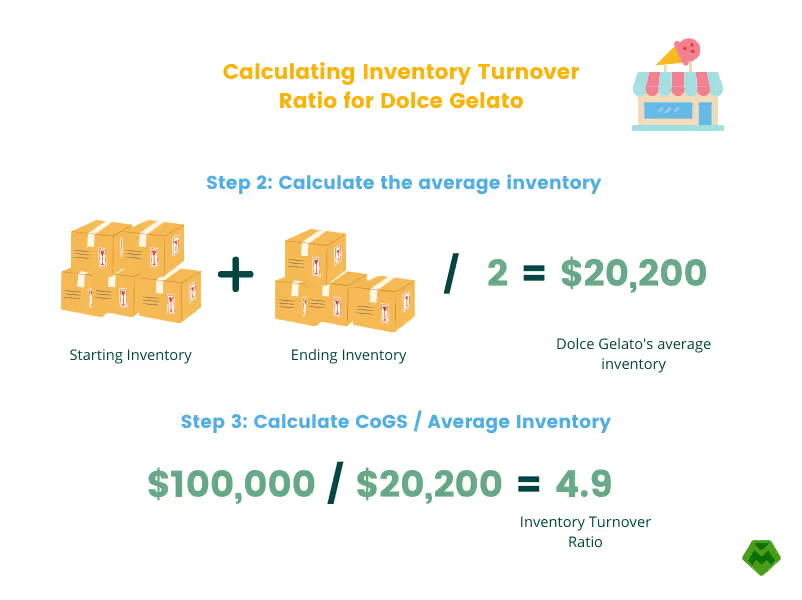

How to Calculate Inventory Turnover for a Restaurant
What is inventory turnover ratio? This calculation will help you closely track your inventory and manage your expenses to ensure your restaurant is profitable. Here’s how to use it:
It's vital to keep track of your inventory to ensure your restaurant is profitable.
Considering restaurants operate on razor-thin margins, all types of businesses in the hospitality industry — from breweries to food trucks to fine dining restaurants — can benefit from tracking their inventory numbers meticulously.
Using the metric to calculate food cost, ordering, menu pricing, purchasing, and more, is a powerful decision-making tool. Like all shrewd inventory management practices, taking time to figure out your ratio means you’ll have improved control over your waste, usage, stock levels, costs, and profits. We’ll share some helpful tools you can use to make these types of good business practices, accurate, easy, and profitable.
EBOOK
5 Ways to Recession - Proof Your Restaurant Business
Optimizing restaurant operations in 2023 and beyond
If you're in charge of a restaurant's day-to-day operations, read on to learn more about your inventory turnover ratio.
In this article, you will learn:
- The definition of inventory turnover
- How to calculate inventory turnover
- What your inventory ratio means
- How to achieve an optimal ratio
What is Inventory Turnover Ratio?
Inventory turnover ratio is an efficiency metric that compares the amount of product a restaurant has on hand (called inventory) to the amount it sells. In other words, inventory turnover measures the number of times the restaurant sold out its inventory in a specific time period.
A low ratio indicates too much inventory in stock or low sales, while a high ratio suggests a flawed inventory purchasing plan (demonstrated by churn) or strong sales.
Turnover is necessary to calculate because fresh food has a relatively short shelf life. Diligent inventory management leads to less waste and more productive use of existing inventory. Taking inventory stock is essential for maintaining food safety and food quality.
How To Calculate Inventory Turnover Ratio
Figuring out your inventory turnover ratio means you'll have enhanced control over your waste, usage, stock levels, costs, and profits. Restaurant management software can make this process even easier by offering accurate and automated inventory reports.
Keep in mind that different inputs can be used to compute inventory turnover ratio.This article will show you how to calculate this ratio using the average inventory and costs of goods sold.
While you can use total restaurant sales to calculate this ratio, cost of goods sold (COGS) includes markup costs and may give you a more accurate number.
Begin by determining a time period you want to measure (monthly, annual, etc.). Next, find these three numbers — beginning inventory (in dollars), ending inventory (in dollars), and the cost of goods sold — to calculate the average inventory.
Calculate Average Inventory for a Time Period
(Beginning Inventory + Ending Inventory) / 2 = Average Inventory
Calculate Inventory Turnover Ratio
Inventory Turnover Ratio = Cost of Goods Sold / Average Inventory

Example: Inventory Turnover at Dolce Gelato
Let's walk through an example of a business' inventory turnover ratio calculation.
Take the hypothetical Dolce Gelato. Dolce Gelato is a popular spot for people of all ages and churns close to 30,000 pints of gelato a year. The managers at Dolce Gelato must track inventory closely as the gelato-making process is very precise.
Remember: the first step in determining this ratio is to choose a specific time period. In this example, we'll analyze Dolce Gelato's inventory for one year. To find the cost of goods (CoGS) sold for one year, we'll compile all expenses related to the gelato-making process. These costs include milk, sugar, cream, eggs, and flavorings.

Let's say that the gelato shop's CoGS for the year is $100,000 — the next step is to calculate the average inventory. After adding starting inventory and ending inventory and dividing by two, we're left with $20,200. Therefore, $20,200 is the shop's average inventory.
Next, we calculate CoGS / Average Inventory.
$100,000 / $20,200 = 4.9.

Here we see the gelato shop has an inventory turnover ratio of 4.9. A high inventory turnover ratio means you're holding too much stock. In this example, Dolce Gelato maintains an adequate inventory turnover ratio, as the industry average is ~5.
What Does Your Ratio Mean?
Calculating your turnover offers visibility into many aspects of your inventory management and shows you when to dive deeper into any issues that arise. Your target ratio depends heavily on the type of restaurant you operate. Research turnover rates in your niche to make educated comparisons.
The more perishable, fresh ingredients you use, the higher your turnover should be. A high turnover rate generally tends to cut down on wastage and can indicate robust sales. A low turnover rate may indicate overstocked inventory or poor sales. A lower turnover rate isn't always necessarily a bad sign, but it could be a signal to look further into your inventory operations before potentially making changes.
How to Achieve Your Optimal Ratio
It's crucial to maintain an excellent inventory turnover ratio so your food items don't go to waste.
Here are three actionable ways to reach an optimal turnover:
1. Forecast sales and inventory.
Restaurant forecasting has the power to influence major decisions in your restaurant.
Use a forecasting tool to anticipate your expected sales and analyze reports from previous months or years to figure out how much to order monthly.
MarketMan's powerful analytics platform can help with this task.
2. Establish inventory best practices.
Implement a first-in, first-out (FIFO) policy. This means the items purchased first are the items sold first. Instruct employees to rotate older goods to the front to ensure they are used before they expire to cut down on spoilage and waste. Be sure to always take inventory before placing a new order, too. It may seem like common sense, but you may order items you already have in stock if you forget to do it.
3. Negotiate raw materials costs with vendors.
Vendors may be open to negotiating prices for inventory. Food prices have skyrocketed in the past few years, so you can try to lock in long-term prices on products that you're likely to use frequently. Buy in bulk, and consider talking to various vendors and comparing prices between them.
EBOOK
5 Ways to Recession - Proof Your Restaurant Business
Optimizing restaurant operations in 2023 and beyond
MarketMan provides an all-in-one solution for restaurant management tasks, whether you run one restaurant or 100. Ready to take your inventory management to the next level with top-notch inventory management software?

Automate your inventory management, control food costs, and streamline back-of-house processes effortlessly with MarketMan's restaurant software. MarketMan enables restaurateurs to eliminate manual tasks, reduce waste, and drive success through strategic insights. Experience a new level of restaurant efficiency. Schedule a demo now to learn how MarketMan can revolutionize your operations!
Five Profit-Impacting Trends Shaping the Restaurant Industry in 2023
🔓 Unlock the secrets to restaurant success with actionable strategies for optimizing operations, maximizing profits, and building a loyal customer base.

Author
Contributors
If you have any questions or need help, feel free to reach out
Don't miss out on maximizing your restaurant's profits! Calculate your ROI with MarketMan
Join over 18,000 restaurants and get the hottest restaurant tips delivered to your inbox
You may also be interested in
Ready to get started?
Talk to a restaurant expert today and learn how MarketMan can help your business






